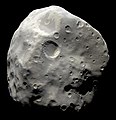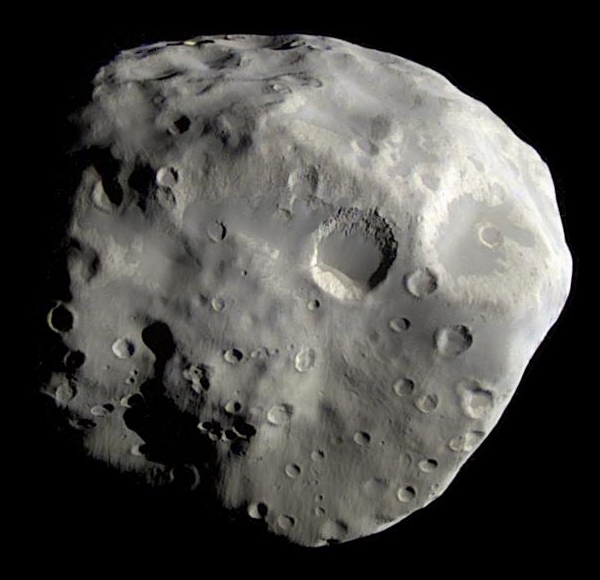Fichier:PIA09813 Epimetheus S. polar region.jpg
PIA09813_Epimetheus_S._polar_region.jpg (600 × 580 pixels, taille du fichier : 153 kio, type MIME : image/jpeg)
Historique du fichier
Cliquer sur une date et heure pour voir le fichier tel qu'il était à ce moment-là.
| Date et heure | Vignette | Dimensions | Utilisateur | Commentaire | |
|---|---|---|---|---|---|
| actuel | 6 janvier 2013 à 00:49 |  | 600 × 580 (153 kio) | Antonsusi | Turn back ok, but the margin makes only a smaller, not optimised visible size of the object on pages. |
| 19 décembre 2012 à 09:59 |  | 680 × 640 (222 kio) | WolfmanSF | Reverted to version as of 17:18, 11 January 2008 - Solar System objects are normally portrayed with north up, which means solar illumination comes from the side; also, there's no artistic advantage to eliminating the margin | |
| 9 janvier 2011 à 04:39 |  | 580 × 600 (146 kio) | Antonsusi | cropped, turned upright | |
| 11 janvier 2008 à 19:18 |  | 680 × 640 (222 kio) | WolfmanSF | replace with processed NASA image |
Utilisation du fichier
Les 12 pages suivantes utilisent ce fichier :
- Galerie du Système solaire
- Liste d'objets du Système solaire
- Satellites naturels de Saturne
- Satellites naturels du Système solaire
- Système solaire
- Épiméthée (lune)
- Utilisateur:Aymeric C56/Brouillon
- Utilisateur:Romy22W/Brouillon
- Modèle:Résumé Système solaire
- Modèle:SystemeSolaireResumeLarge
- Portail:Astronomie/Image48
- Portail:Astronomie/Images
Usage global du fichier
Les autres wikis suivants utilisent ce fichier :
- Utilisation sur af.wikipedia.org
- Utilisation sur als.wikipedia.org
- Utilisation sur ar.wikipedia.org
- Utilisation sur ary.wikipedia.org
- Utilisation sur arz.wikipedia.org
- Utilisation sur ast.wikipedia.org
- Utilisation sur as.wikipedia.org
- Utilisation sur be.wikipedia.org
- Utilisation sur bh.wikipedia.org
- Utilisation sur bs.wikipedia.org
- Utilisation sur ca.wikipedia.org
- Utilisation sur ckb.wikipedia.org
- Utilisation sur de.wikipedia.org
- Utilisation sur el.wikipedia.org
- Utilisation sur en.wikipedia.org
- Cassini–Huygens
- Epimetheus (moon)
- Wikipedia:Selected anniversaries/December 18
- Timeline of discovery of Solar System planets and their moons
- Moons of Saturn
- List of Solar System objects by size
- Naming of moons
- List of natural satellites
- User:Dabomb87/Sandbox
- Talk:Solar System/Archive 7
- Wikipedia:Main Page history/2012 December 18
Voir davantage sur l’utilisation globale de ce fichier.



